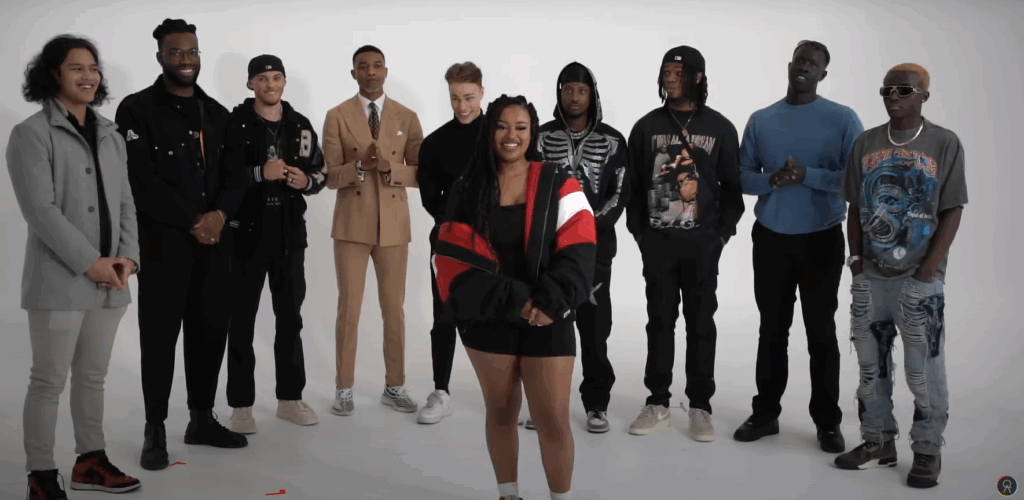
“They said they wanted a diverse cast. Then they cast the same five archetypes — again.”
That line came from a creative in Sydney during a Quasar Central casting call. No cameras, no script. Just truth.
The room fell silent — because everyone knew it was true.
In an age where “real people” are prized in media, casting is often a performance of authenticity. Creators claim to seek representation — but what they often want are marketable stereotypes.
That’s why “casting fake” has become one of the realest conversations in the storytelling and reality TV space.
And why platforms like Quasar Central are building a blueprint for change.
🎯 What This Article Aims to Do
Too many casting calls promise representation but deliver repetition.
Whether it’s dating shows, social experiments, or YouTube debates, the same faces and personalities reappear — filtered, polished, and pre-approved.
This blog explores:
- Why fake casting persists
- What authentic casting actually looks like
- How Quasar Central is doing it differently
- And why real people still matter in an AI-powered media world
🎥 What Is “Casting Fake”?
“Casting fake” doesn’t mean casting actors. It means casting for performance instead of presence.
Examples:
- Inviting someone with a controversial opinion just to spark drama
- Repeatedly casting racially ambiguous people for “diversity” without context
- Choosing models who look relatable — but come from agencies, not communities
- Prioritizing social media follower count over life experience
This is representation without responsibility. And audiences are catching on.
🧠 The Psychology Behind It: Why Producers Default to Archetypes
Producers know what “works.” And archetypes have been proven to drive views:
- The Outspoken Feminist
- The Soft-Spoken Conservative
- The Charismatic Underdog
- The Clueless but Pretty
- The Loud One™
These tropes help editors shape narratives. But they also flatten real people into clickable people.
It’s risk-averse casting. It’s “diversity optics.” And it’s everywhere — from Netflix to TikTok.
📉 What It Costs: Trust, Depth, and Long-Term Engagement
Today’s audiences are smarter. They don’t just want to watch — they want to relate.
When casting feels fake:
- Trust drops
- Comments turn cynical
- Replay value tanks
- Brands hesitate to sponsor
In contrast, authentic casting:
- Builds parasocial bonds
- Drives discussion in forums
- Gets shared because it feels risky and real
That’s the edge Quasar Central leans into.
🌏 Case Study: How Quasar Central Casts Across APA
Quasar Central doesn’t hire talent agencies. We build communities.
Across Melbourne, Sydney, Gold Coast, New Zealand, and Bali, Quasar uses a grassroots casting model:
- 1,600+ cast sign-ups from across the Asia-Pacific region
- Recruitment via open applications, street outreach, and community referrals
- Pre-screening interviews that focus on personality, not performance training
- Commitment to no-script, unscripted formats (like Spectrum, Blind Dating, Ranking Based on Looks)
This is why “Four The Boys,” a YouTube channel created by Quasar alums, grew to over 17K subs in under 7 months — they were real friends, not fake castmates.
🧬 “Real Casting” Looks Like This
What makes Quasar’s casting real:
- People with no on-camera experience
- Accents, stutters, silences — kept in the edit
- Age-diverse, body-diverse, and culturally fluid mixes
- People who change their mind on camera, not just defend their identity
“I came here thinking one thing… but now I’m rethinking it.”
When someone says that in a Quasar episode, it’s the real win.
🤖 What About AI Casting?
As AI tools start to shape scripts, faces, and even full avatars, casting real humans becomes even more revolutionary.
Quasar Central leverages AI — not to replace people, but to better serve them:
- Smart sorting tools to filter 1000+ applications by diversity metrics
- AI-assisted personality clustering to create group balance without tokenism
- Viewer behavior analysis to see which cast dynamics spark the most engagement (without clickbait drama)
The future isn’t AI vs humans — it’s AI with humans. Thoughtfully.
🧨 Common Excuses for Fake Casting — and Why They Don’t Hold
1. “We need people who know how to talk on camera.”
Train them. That’s your job as a producer.
2. “We couldn’t find enough ‘diverse’ people who applied.”
Did you go to them, or just post on your LinkedIn?
3. “Audiences like familiar faces.”
Audiences like real faces. They’re tired of Netflix clones.
❤️ What Real Casting Creates: Culture, Not Just Content
When you cast for complexity:
- You create episodes that become archives of lived experience
- You get community feedback, not just likes
- You invite contradiction, reflection, and evolution
Quasar’s top-performing formats — from Do All [Group] Think the Same? to Blind Dating Based on Glow Ups — work because people see themselves in the messiness, not the polish.
🌍 Why This Matters Now
We’re at a media tipping point.
With AI on the rise, studio systems shrinking, and creators burning out, trust and truth will be the next currency.
Fake casting erodes both.
That’s why platforms like Quasar Central matter. Not because they’re perfect — but because they’re trying to cast people, not projections.
📝 Final Thought
“I wasn’t picked because I’m a character. I was picked because I’m me.”
That’s what one cast member told us after filming in Bali.
That sentence is the gold standard.
📺 Watch real casting in action on Quasar Central
💬 Tag someone who needs to stop casting fake, and start casting real.
